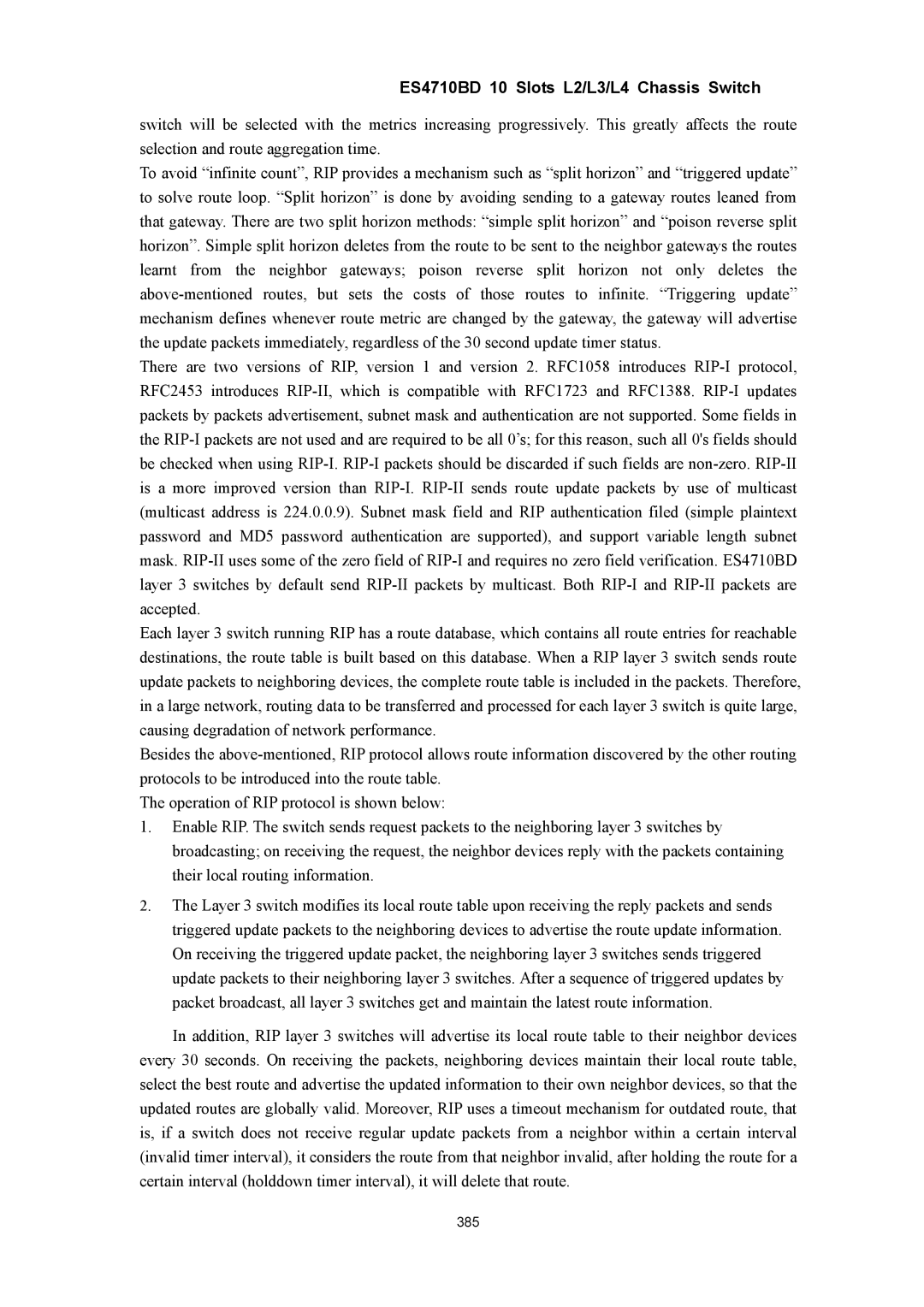ES4710BD 10 Slots L2/L3/L4 Chassis Switch
switch will be selected with the metrics increasing progressively. This greatly affects the route selection and route aggregation time.
To avoid “infinite count”, RIP provides a mechanism such as “split horizon” and “triggered update” to solve route loop. “Split horizon” is done by avoiding sending to a gateway routes leaned from that gateway. There are two split horizon methods: “simple split horizon” and “poison reverse split horizon”. Simple split horizon deletes from the route to be sent to the neighbor gateways the routes learnt from the neighbor gateways; poison reverse split horizon not only deletes the
There are two versions of RIP, version 1 and version 2. RFC1058 introduces
Each layer 3 switch running RIP has a route database, which contains all route entries for reachable destinations, the route table is built based on this database. When a RIP layer 3 switch sends route update packets to neighboring devices, the complete route table is included in the packets. Therefore, in a large network, routing data to be transferred and processed for each layer 3 switch is quite large, causing degradation of network performance.
Besides the
The operation of RIP protocol is shown below:
1.Enable RIP. The switch sends request packets to the neighboring layer 3 switches by broadcasting; on receiving the request, the neighbor devices reply with the packets containing their local routing information.
2.The Layer 3 switch modifies its local route table upon receiving the reply packets and sends triggered update packets to the neighboring devices to advertise the route update information. On receiving the triggered update packet, the neighboring layer 3 switches sends triggered update packets to their neighboring layer 3 switches. After a sequence of triggered updates by packet broadcast, all layer 3 switches get and maintain the latest route information.
In addition, RIP layer 3 switches will advertise its local route table to their neighbor devices every 30 seconds. On receiving the packets, neighboring devices maintain their local route table, select the best route and advertise the updated information to their own neighbor devices, so that the updated routes are globally valid. Moreover, RIP uses a timeout mechanism for outdated route, that is, if a switch does not receive regular update packets from a neighbor within a certain interval (invalid timer interval), it considers the route from that neighbor invalid, after holding the route for a certain interval (holddown timer interval), it will delete that route.
